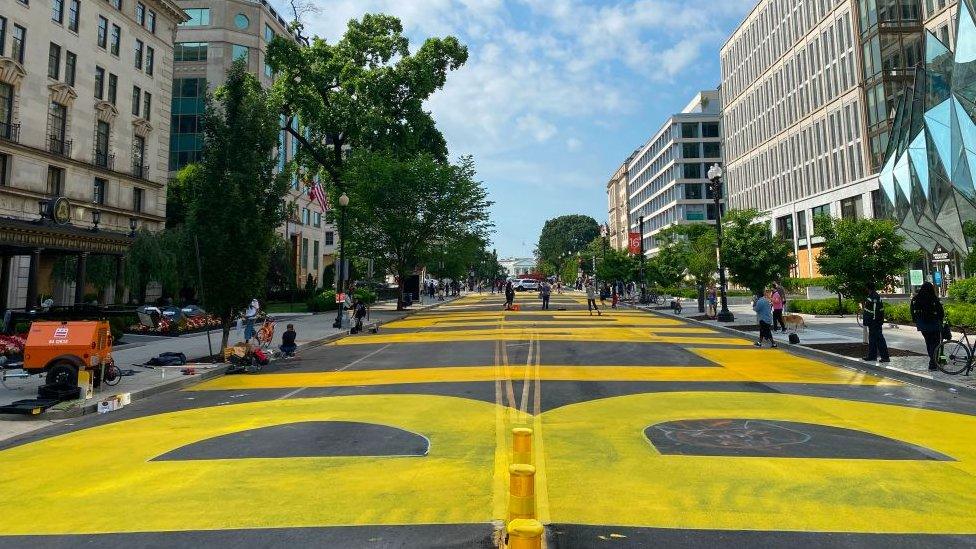Heat ray 'was sought' against protest in Washington's Lafayette Square
- Published

The Active Denial System (ADS) uses a microwave beam to make targets feel like their skin is burning
Officers requested a "heat ray" weapon for possible use against protesters in a park next to the White House in June, a National Guard major has said.
Military police allegedly asked the National Guard for the Active Denial System (ADS), which makes targets feel their skin is on fire.
It happened before Lafayette Square was cleared of people protesting against the killing of black man George Floyd.
The National Guard did not possess the heat ray and it was not used.
Law enforcement officers are instead believed to have used tear gas, rubber bullets and smoke grenades to clear the park on 1 June.
At the time authorities said it was to tackle violent protesters who had thrown rocks at police and started fires. Reporters at the scene however said the demonstration had been peaceful.
Park Police have denied using tear gas, saying that they instead fired "pepper balls" - projectiles with capsaicin, the chemical that gives peppers heat - at protesters.
Shortly after officers cleared the park, US President Donald Trump walked across the street from the White House for a photo opportunity outside a church.
Protesters were cleared moments before Trump came through the square, which drew heavy criticism from both Democrats and Republicans, and Washington DC Mayor Muriel Bowser called it "shameful".
Attorney General William Barr later said that the claim that protesters were cleared for President Trump's photo opportunity was "totally false" and that the decision had been taken the previous evening.
What did the major say?
National Guard Major Adam DeMarco was at the scene of the protest, serving as a liaison officer in a supervisory role.
In written testimony provided to US lawmakers, external and first published by NPR, external, Maj De Marco said a senior military police officer asked if the National Guard in the US capital had the ADS in the morning of 1 June.
The heat ray weapon uses a microwave beam to make human skin feel like it is burning. Authorities say it causes no permanent damage.
The US's history of racial inequality has paved the way for modern day police brutality
In an email which Maj DeMarco was copied into, the senior officer said the ADS "can immediately compel an individual to cease threatening behavior", describing the effect of the weapon as "overwhelming".
Maj DeMarco responded that the DC National Guard did not have the ADS, nor an LRAD - a Long Range Acoustic Device, also requested, which can blast a wall of sound at crowds.
Federal officials also began stockpiling ammunition that day, Maj DeMarco said.
A US defence department official, speaking to the Washington Post, characterised the emails as "routine inventory checks" about available equipment.
The department, the army and the National Guard did not respond to specific questions from the newspaper about munitions and their planned use.

Maj DeMarco is an Iraq War veteran who ran for Congress as a Democrat in 2018
The major is an Iraq War veteran who has said he was "deeply disturbed" by the official response. The 34-year-old ran for Congress in 2018 as a Democrat on a platform that was heavily critical of President Trump.
According to a New York Times report in August, borders officials proposed using the heat ray to stop migrants, external at the US southern border in 2018. The system was deployed in Afghanistan by the US military but reportedly was not used operationally.
What happened at Lafayette Square?
Demonstrators had gathered in the park near the White House for days as part of mass protests against police brutality and racism in the US.
Police moved in to clear them at about 18:30 local time (22:30 GMT) - about 30 minutes before a city-wide curfew went into effect - and just as Mr Trump began a televised speech from the White House Rose Garden.
After his speech ended, and as the protesters were further pushed back, Mr Trump walked to the nearby St John's Episcopal Church and briefly posed for a photo as he held up a Bible. The basement of the church had been set on fire the previous day.
The White House said that the decision to expand the security perimeter was not related to the president's decision to visit the church, where moments earlier protesters had gathered.
DC Mayor Muriel Bowser later renamed a plaza outside the White House - now Black Lives Matter Plaza - as a rebuke to the president.
Correction 15th May 2022: An earlier version of this article reported that protesters were cleared from Lafayette Square to make way for President Trump and this has been amended to make clear that this is a claim which was denied by Attorney General William Barr.
How one man's death reverberated around the world


The US election is in November - and the BBC wants to answer your questions about everything from policies to protests.
Please submit your questions below.
In some cases, your question will be published, displaying your name, age and location as you provide it, unless you state otherwise. Your contact details will never be published. Please ensure you have read our terms & conditions and privacy policy.
Related topics
- Published27 July 2020
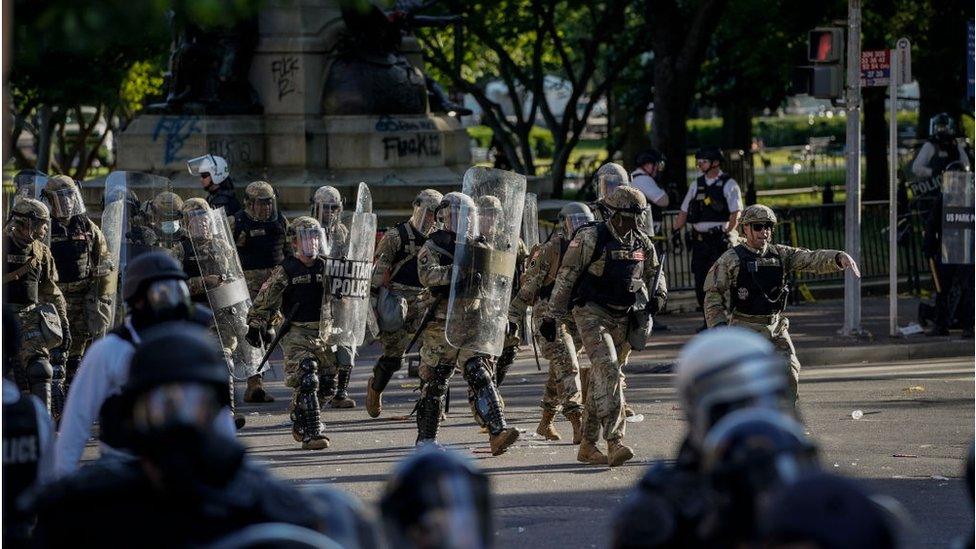
- Published22 April 2021
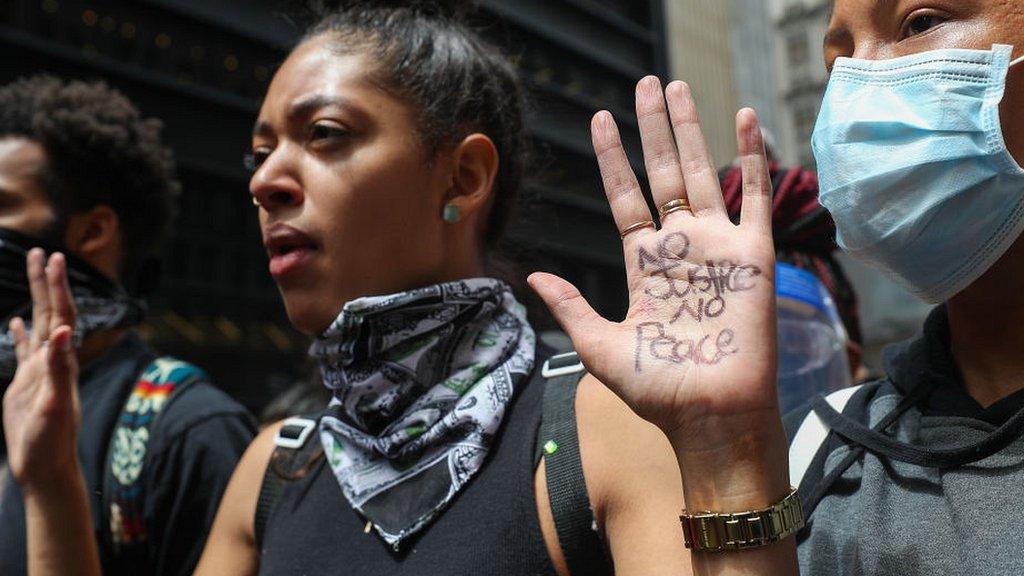
- Published7 June 2020
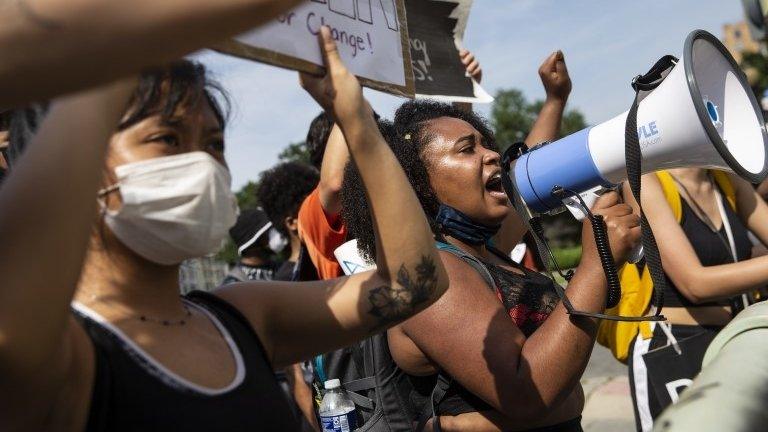
- Published5 June 2020
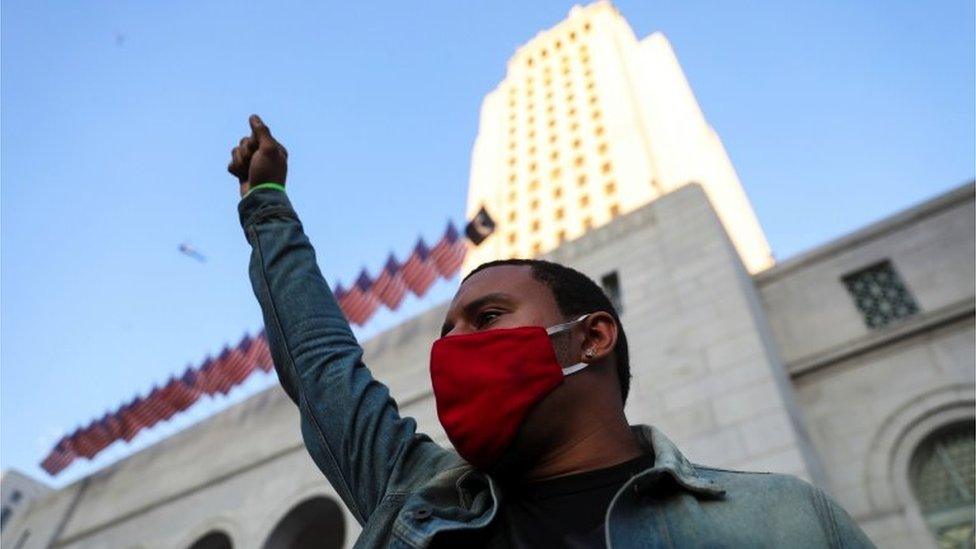
- Published5 June 2020
